By Bill Axsen
Gate Oscillators
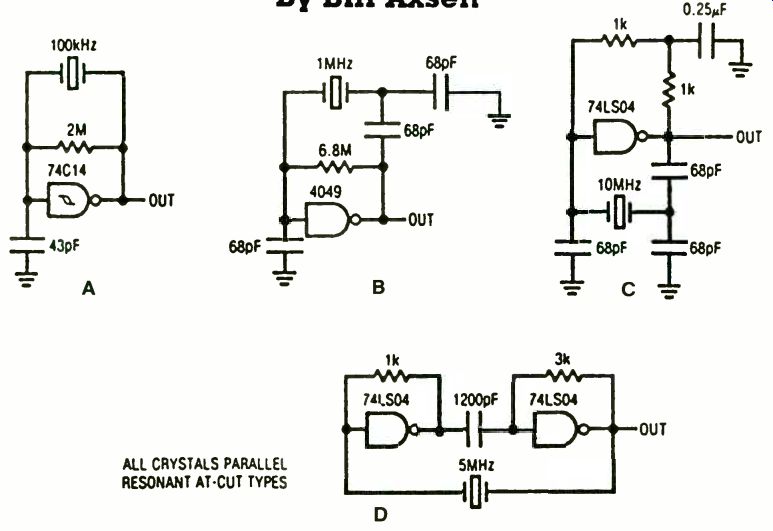
------ ALL CRYSTALS PARALLEL RESONANT AT-CUT TYPES
Those of us who have used crystal oscillator circuits know how useful they can be. For those who have not, now may be the time to familiarize yourself with these extremely useful circuits. With few exceptions crystal oscillators are used in digital or communication equipment. They supply a highly stable frequency source which cannot be obtained by LC oscillators, at relative bargain prices. Crystal oscillators are found in digital watches, calculators, digital meters, and transmitters, just to name a few applications.
The circuits in this article were chosen, for the most part, because they don't require exotic parts and have a minimum parts count. You should be able to find the majority of the parts in your junk box. In circuits which do require "non standard hobbyist parts" a reference will be made in the article where these parts may be obtained.
With the exception of two-frequency generator circuits, circuits described in this article were taken from the Linear Technology's, Application Note 12, Circuit Techniques for Clock Sources. If you are interested in a more in-depth explanation of the circuits described, it is suggested that you write to Linear Technology at the following address and ask for Application Note 12.
Linear Technology Corporation
1630 McCarthy Blvd.
Milipitas, CA 95035-7487
Circuits "A"-"D" are typical gate oscillators which, as you can see, require only a minimum number of parts. These gate oscillators are worth mentioning because they work so well. If you have ever worked with gate oscillators, you know how temperamental they can be. Usually their operation is intermittent or they fail to oscillate; or you spend all day tuning the all-too-familiar trimmer capacitor trying to get them to oscillate. There are even cases where substituting one chip manufacture's IC for another will cause the circuit to fail to oscillate.
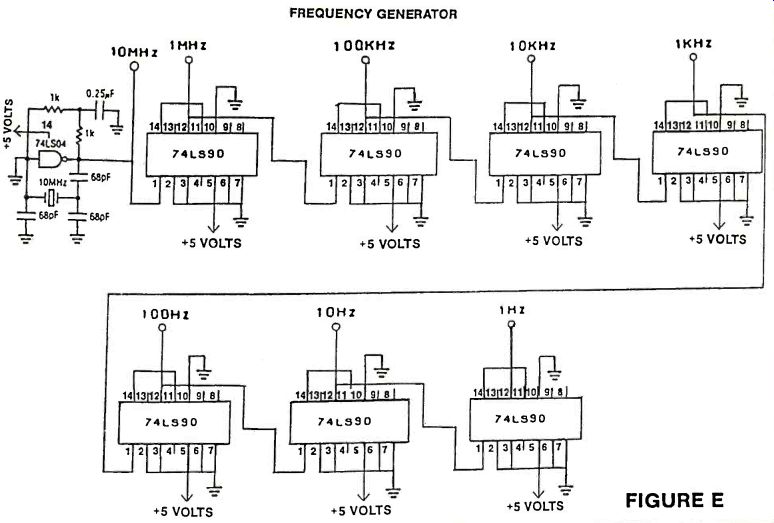
FIGURE E
Gate Oscillators
There may be the oddball occasion in which one of these circuits fails to operate. It is Therefore, suggested that you test the oscillator in your circuit before you incorporate it into your design. Even though this problem occasionally happens, these gated oscillator circuits are so easy to build and require so few parts that you will find yourself selecting them over more complex oscillators.
The author has used circuit "A" a CMOS Schmitt trigger to calibrate equipment, as a clock in a frequency counter, and even as a source of clock pulses for a digital clock. By using a 7490 decade counter or a 4017 counter /divider you can divide the output frequency to obtain highly accurate frequencies below the oscillator frequency. Schematics of two professional quality frequency generators are shown in Figure "E" and "F."
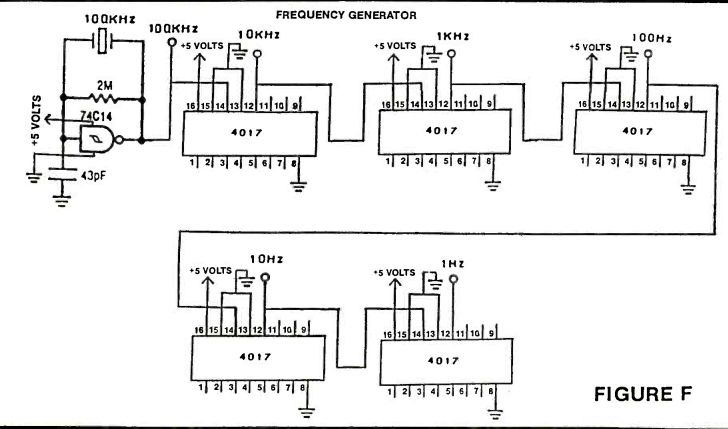
FIGURE F
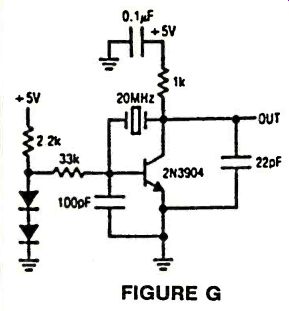
FIGURE G
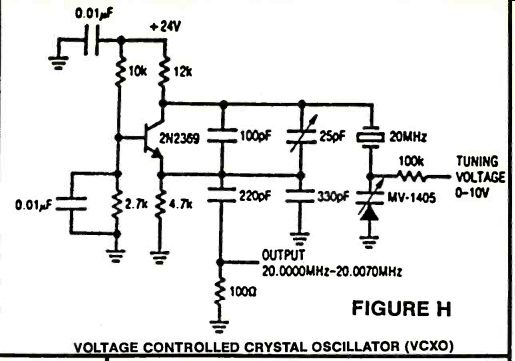
FIGURE H
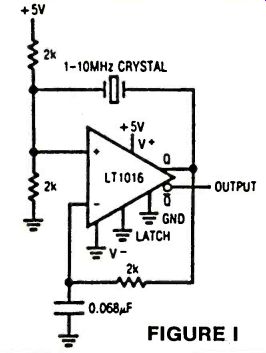
FIGURE I

FIGURE J
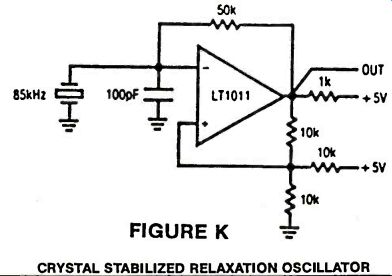
FIGURE K
For those of you who like working with transistor circuits, "G" and "H" should be of interest. Circuit "H" is an especially interesting circuit since it is a voltage controlled crystal oscillator (VCXO). This circuit could easily be converted to a low power, narrow bandwidth FM transmitter by applying a 0-10 volt audio signal to it.
Circuits "I," "J" and "K" round out our discussion of crystal oscillators. These circuits use comparators to make crystal oscillators. While the integrated circuits used in these oscillators may not be standard "hobbyist" IC's, you can obtain them by writing to Linear Technology and finding out where, in your city, the nearest distributor of Linear Technology parts is located...From that point you are on your own...Have fun!
adapted from: Electronics Handbook Vol. X